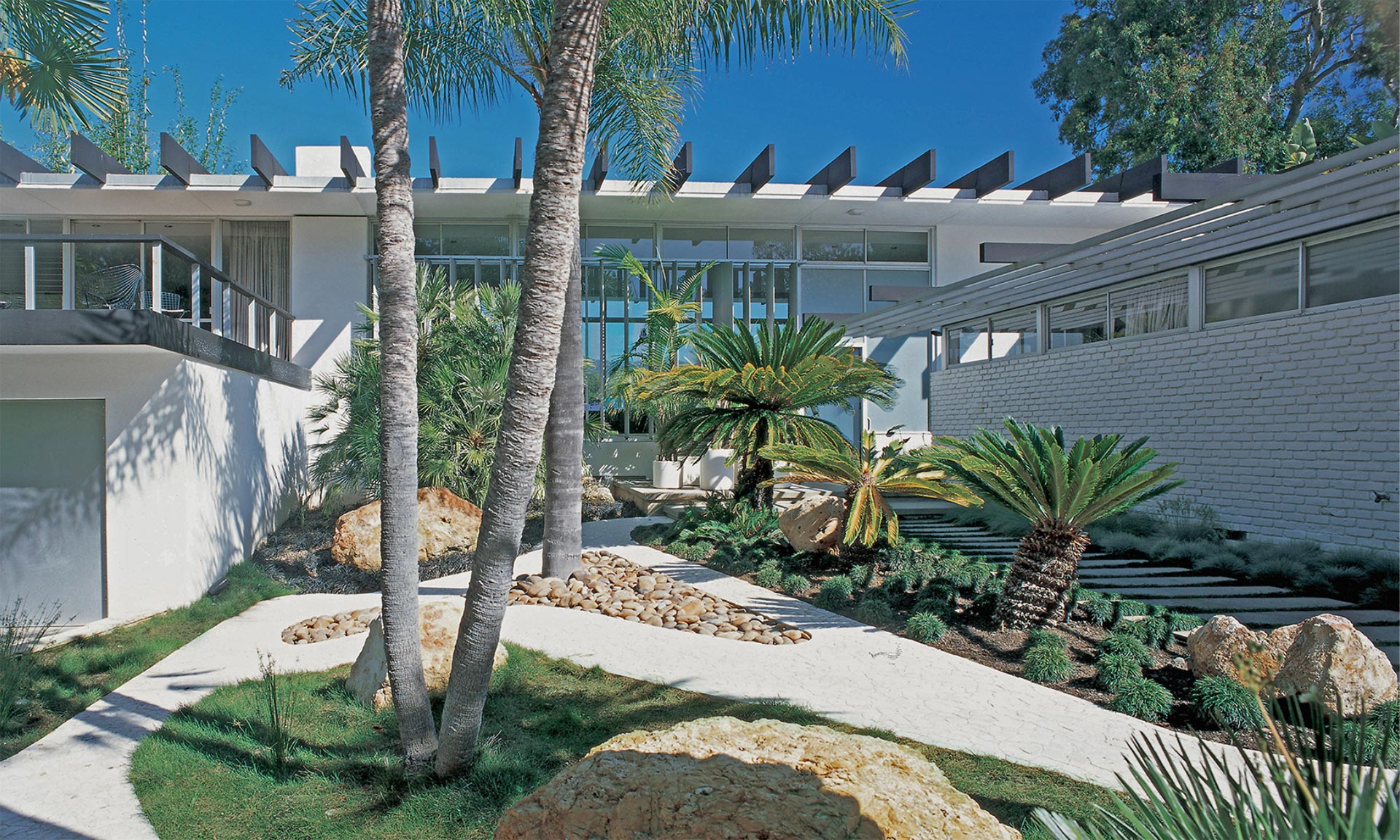
Santa Monica
Petty thief. Compulsive liar (he even skipped town on his own mother!). Commitment-phobic baby-daddy. Serial cheater. Sinner. Saint. While these descriptors could be ripped from today’s headlines, they aren’t about pop culture’s bad-boy du jour : they describe St. Augustine (354-430 CE), considered the actual baby-daddy of Western Christianity.
Monica, the mother of Augustine, was understandably known as “the weeping saint.” When Franciscan missionary and explorer Father Juan Crespi encountered a pair of twin springs, he named the area Santa Monica, in honor of a mother’s tears shed for her wayward son.
Today, Southern California’s most famous beach-town is anything but morose. Sandwiched between the rustic elegance of the Pacific Palisades and the carnival charms of the Pier, at just 8.3 square miles, Santa Monica embodies what’s best about beachfront life in Los Angeles.
The pristine air is sea-washed and the souvenir tie-dyed t-shirts are artisanal, with year-round temperatures kept moderate by coastal breezes. In spite of constant human presence, dolphins cavort daily among surfers and swimmers in Santa Monica Bay. The sunsets here are as spectacular as any on the planet, and locals often report witnessing the famous “green flash”—two cosmic seconds that may change your life. Now known as Silicon Beach, Santa Monica is a blazing business center for venture capital-funded start ups, and is a major location for the thriving game development industry.
People choose to live in Santa Monica not only for its low-key, low-carb beauty, but also for its eternally young, free-spirited, bohemian vibe: flip-flop clad CEOs, dog-friendly offices, holistic healers of every stripe, and earnestly vegan restaurant menus. Space is at a premium, and properties tend to share close proximity. This is the preference of Santa Monicans, who view their uniquely chill community as a village of impromptu music jams and cherished community gardens.
The sparkle of sea-spray and the euphoric hush of the tides permeates every corner of this beachfront village, and is what binds together one of the most eclectic communities on earth. People literally travel around the world to work and play here, and all are drawn to Santa Monica State Beach. It’s 3.5 miles of endless sunshine with staffed lifeguard stations, bicycle rentals, volleyball nets, roving snack-vendors, concessions, a bike path, picnic areas, playgrounds and restrooms.
The eternal beach is punctuated by the historic Santa Monica Pier, which greets visitors with its famous neon archway. Built in 1909, the Pier is home to the 1922 Looff Hippodrome Carousel, a National Historic Landmark. Bustling crowds enjoy snacks and souvenirs year-round as the hiss of surf and cries of seagulls wash over the steady beat of hip-hop, reggaeton and rancheras.
The nearby Third Street Promenade in the heart of downtown Santa Monica captures the quirky, sun-kissed essence of America’s most beloved beach town with a densely packed mix of retail and roving street entertainers.
South of San Vicente and north of Montana lies an exclusive stretch of fine homes which offer super-wealthy buyers a uniquely Southern California experience that is casual as well as elegant. Homes here are literally walking-distance to the fabled surf, but also freeway-close to business. Tiny but choice Goose Egg Park on Montana Avenue is a .69 acre landmark for navigating some of the region’s most desirable housing.
Santa Monica feels like its own mythically hip republic or beachfront nation, in part because it is its own incorporated city, a world apart from the City of Los Angeles. The municipality is protected by dedicated law enforcement and fire departments, and Santa Monica shares its school district with nearby Malibu, separate from Los Angeles Unified School District – and the buff beach-cops patrol the boardwalk on bicycles.
But Santa Monica is much more than just boogie-boards and avocado-toast. From an architectural point of view, the City of Santa Monica claims four historic districts, each with its own singular appeal: Third Street Neighborhood Historic District, Bay Street Craftsman Cluster, San Vicente Boulevard Courtyard Apartments Historic District, and the 11th Street Bungalow Historic District.
Of particular note are 37 remarkable homes clustered within six blocks of each other on La Mesa Drive. Located at the northeast edge of the city parallel to San Vicente Boulevard, the La Mesa Drive District is defined by vintage post-top street-lamps and the luxuriant shade of Morton Bay fig trees which add charm to the already-charming stretch of fine homes. Four iconic architectural styles — Monterey, Spanish Colonial Revival, Tudor, and International – offer Santa Monica’s buyers an array of world-class choices in this exclusive district.
An exceptional highlight located at 1911 La Mesa Drive is the only US work Oscar Niemeyer, the daring Brazilian modernist considered to be one of the most influential forces in the 20th century architecture. His sculptural, avant-garde genius shaped numerous museums, university buildings and government monuments worldwide.
Other notables include the work of Lloyd Wright (located at 2323 La Mesa Drive), son of Frank Lloyd Wright, along with Elmer Grey (2009 La Mesa Drive), the innovative force behind the creation of the iconic Beverly Hills Hotel. The Ennis House, last and largest of Frank Lloyd Wright, Sr.’s four “textile block” houses, was designed by the father and built by the son, Lloyd.
True landmarks for their place in history are two homes designed by Paul Revere Williams, located at 2201 and 2209 La Mesa Drive. This trailblazing African-American architect was the first Black member of the American Institute of Architects (AIA). In 2017, 37 years after his death, Williams became the first Black architect to win the coveted AIA Gold Medal.
Other historic jewels of the District include the eight magnificent structures designed in the Spanish Colonial Revival style by Santa Monica native John Byers, and built in the mid-1920s. Byers took great pains to honor the rustic regional traditions referenced in his work, including hand-made adobe bricks, rounded corners, low-pitched red clay-tile roofs, thick adobe walls finished with smooth, whitewashed plaster, stucco and wrought-iron details inspired by the graceful haciendas of the American Southwest.
Architecturals in The Historic La Mesa Drive District
2021 La Mesa Drive, John Byers, 1924, Spanish Colonial Revival Style
2034 La Mesa Drive, John Byers, 1924, Monterey Revival Style
2101 La Mesa Drive, John Byers, 1924, Zimmer House, Mexican Colonial Revival, Hacienda Style
2126 La Mesa Drive, John Byers, 1925, Spanish Colonial Revival Style
2141 La Mesa Drive, John Byers, 1928, Spanish Colonial Revival Style
2210 La Mesa Drive, John Byers, 1925, Spanish Colonial Revival Style
2201 La Mesa Drive, Mrs. W.S. Warfield Residence, Paul R. Williams, 1939, English Tudor Style
2209 La Mesa Drive, Charles H. Hess Residence, Paul R. Williams, 1939, Georgian Revival Style
2323 La Mesa Drive, Jozef Nabel House, Lloyd Wright, Renovations in 1955, 1970, International Style
2501 La Mesa Drive, Stohart-Phlilips House, J.R. Davidson, 1938, International Style
1911 La Mesa Drive, Strick House, Oscar Niemeyer, 1964, Modernist
2009 La Mesa Drive, Elmer Grey, 1926, Period Revival Style (Tudor Style with English Cottage influences)
Sorry we are experiencing system issues. Please try again.

